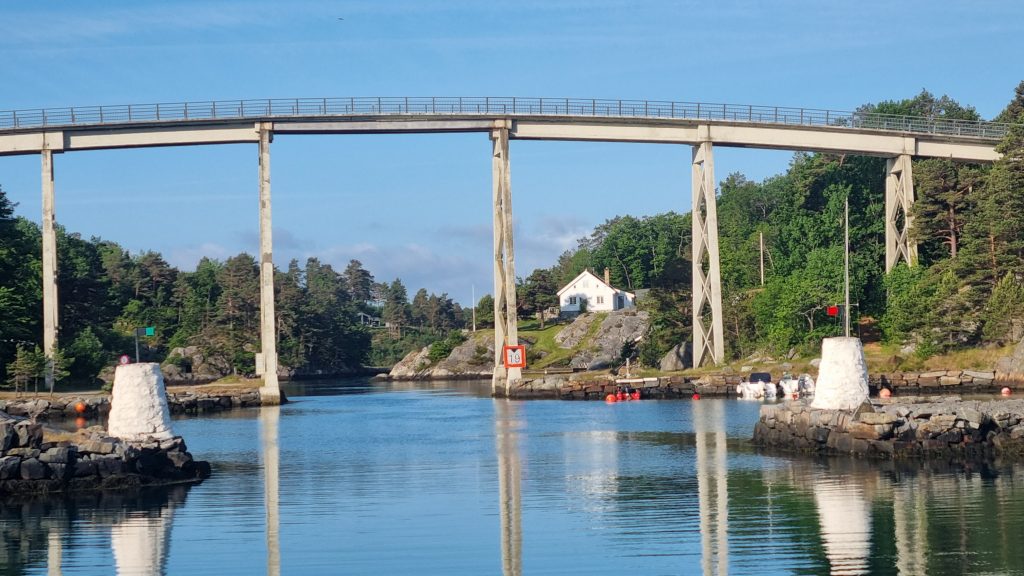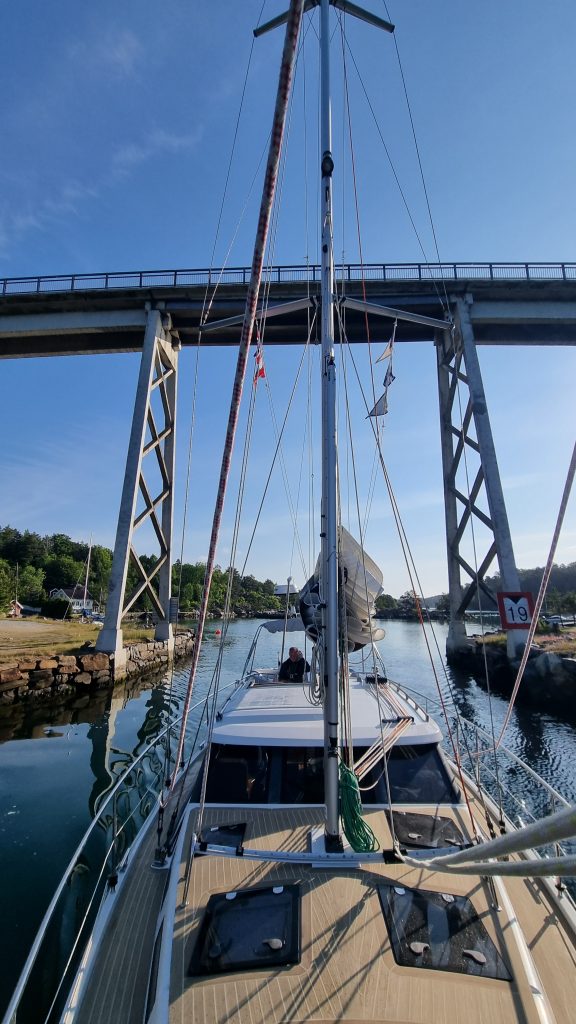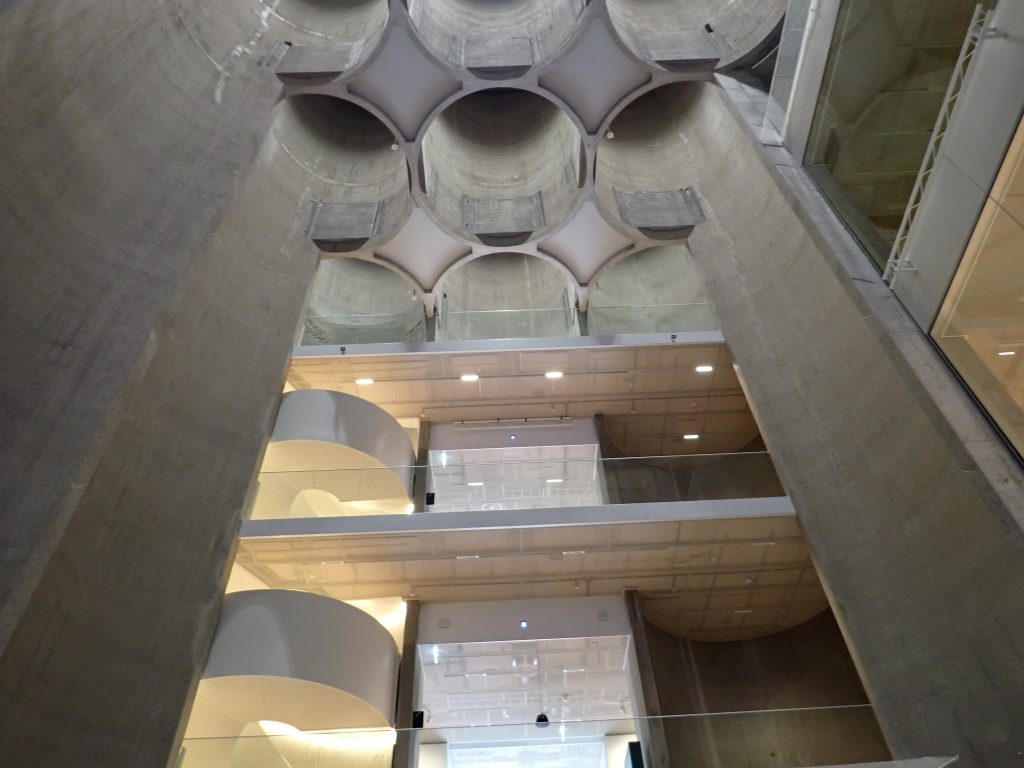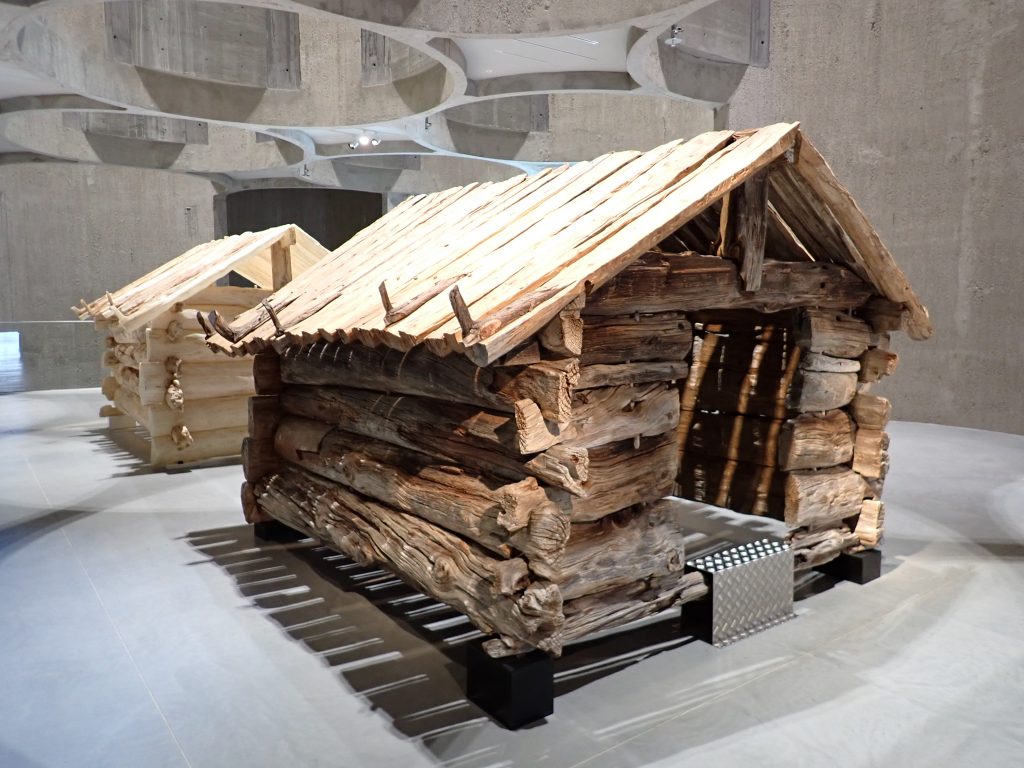Just outside Lillesand is the Blindleia. This translates literally as Blind Alley and does give a clue to the nature of the passage! It is well-marked, but does require constant checking of the chart. Right at the Lillesand end though is the first hurdle – a 19m bridge. Now our mast is 16.1m high, so the maths is clear, there is plenty of space. However, it really doesn’t look it as you approach the bridge and the closer you get, the more tempting it is to turn tail and run. In some ways, it is lucky that as you approach the first bridge, there isn’t even room ti turn around!

As you head through it has sections where it widens out, but there are then further narrow stretches – quite a few where I judiciously slowed down, just to be sure there was enough space.

The Blindleia itself is around 10-12 miles long though we did duck out a little before the end as the last section is a little shallow. At that point we managed to unfurl the genoa and had a very pleasant hour and a half or so of sailing – a nice change after all the motoring we have had to do so far. Just short of Kristiansand we furled in the genoa and motored into Kristiansand, mooring just in front of Aloucia on the outer pontoon near to the fortress.

In the afternoon we then headed over to the Kunstsilo. As the name suggests, it is a modern art museum in an old grain silo -an obvious combination really! The grain silo itself was built in 1935 on the island of Odderøya close to the port area of town and held around 15,000 tons of grain. It served as a grain silo right through to the early 2000s but then it lay empty for a number of years. It wasn’t until a prominent local financier – Nicolai Tangen – donated his extensive modern art collection to the city that people started to think about using the building as a gallery. In 2016 a competition took place to choose an architect and in 2023 the new gallery opened. The main structure has remained very similar to the silo but with the internal storage areas cut out over four floors with exhibition space then being created around the edges. It is nothing short of spectacular as a building.

There did seem to be a lot of work going on to change around the exhibitions, but there was nevertheless some fascinating work. The main permanent work is Project Gjerdeløa. A løe is a wooden cabin and this one dates from the 17th century. In 1980 the artist – Marianne Heske – borrowed it (!) from her home village and dismantled it. She then drove it to the Pompidou Centre in France where it was displayed as part of the 11th Paris Biennale for Young Artists. It was then shown in Oslo for a short time before the Gjerdeløe was returned to Tafjord, exactly one year after it was first taken down. 30 years later Heske was able to purchase the løe and then had an accurate cast made of it in synthetic resin. It finally found a home as part of the Tangen Collection – hence its current status as a permanent item in the Kunstsilo.

